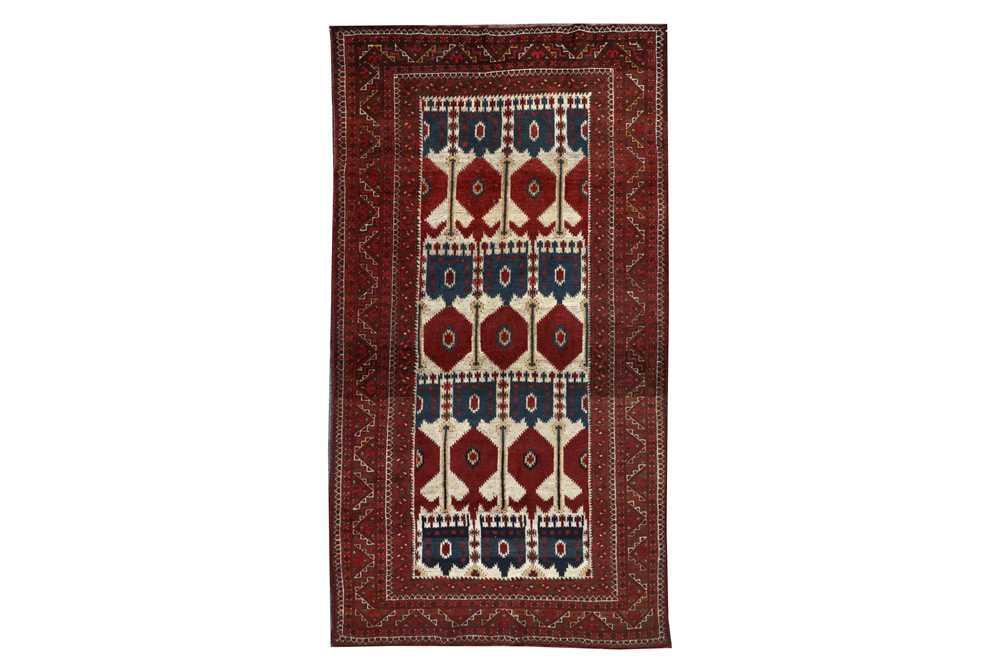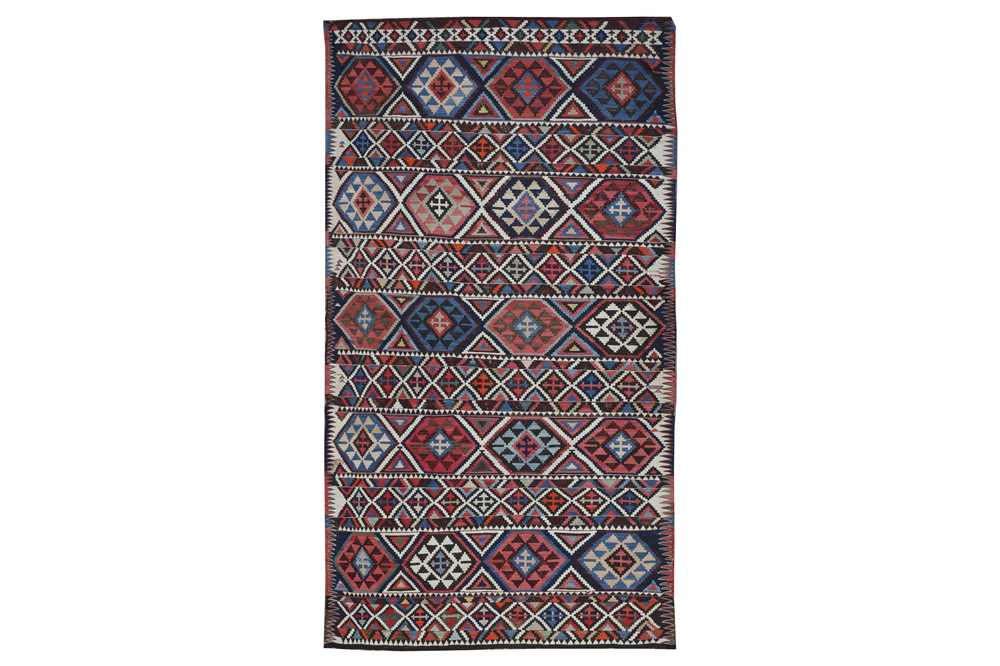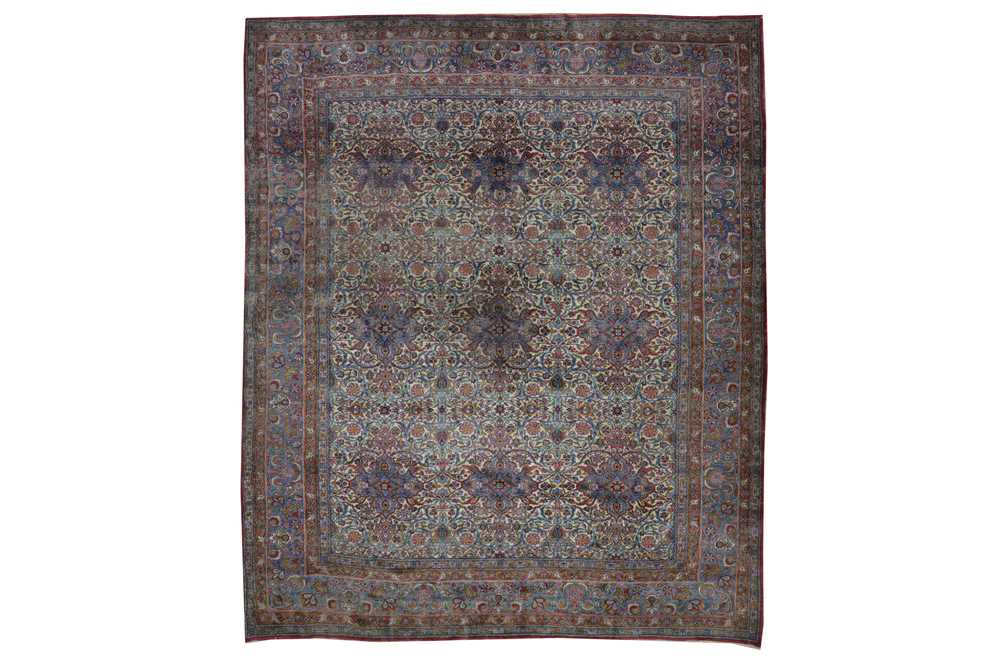How to Buy an Antique Rug
Lot 79, A fine Kirman Laver carpet, South Persia
First step
Knowledge is power! Educate yourself on the various types of rugs on offer, so you can look for exactly what you like. You can choose from finely woven rugs with detailed floral designs, or more tribal rugs which tend to be smaller in size with overtly stylised geometric and floral forms.
Look at what's coming up in our 21 September sale.
Wool, cotton and silk were the main materials used for producing high-quality floor rugs, which was important not only for the look and feel of a carpet but for its durability. The highest value rugs are usually silk on silk, or silk with a fine wool blend.

Lot 7. An extremely fine part silk nain rug, Central Persia
Types of antique rugs
Tribal rugs
Small rugs woven in tents, predominantly by nomadic tribes. Bright, colourful, graphic designs used domestically to protect the tribes from cold and damp, but also to use to barter and sell.
Court Period rugs
Rugs were made in the Islamic world as early as the 11th century, firstly in Iran for domestic use and then progressed for the following Royal courts of the Ottoman, Safavid, and Mughal empires.
These rugs were particularly ornate works of art that represented the wealth and status of those that commissioned them. They were used in court on floors in grand reception halls, as well as private chambers. They were also presented as impressive gifts to other rulers. Paintings of the 16th and 17th centuries show smaller rugs layered on top of larger carpets and many were used in outdoor pleasure pavilions and palatial parks.
Rulers were able to attain lavish materials, such as silk and employed highly skilled designers and weavers in their empires, to create luxurious rugs and carpets. Because of this, court rugs are highly sought after for their stunning designs, exceptional quality and the skills employed to create them.
Lot 39, A fine Heriz carpet, North-West Persia
Current trends in antique rug collecting
The most popular area of antique rug collecting are rugs that are rare examples, dating from the 19th century or earlier. Collectors will bid furiously for rugs from the Mughal, Safavid and Ottoman periods, favouring colour, design and rarity above condition.
However, for the general buyer, collectible - rather than practical - rugs are popular. Bought to go on a wall, small tribal style rugs woven by nomadic groups sell well. Antique Seychour rugs from Azerbaijan are also in demand for their brightly coloured graphic designs.
The market continues to be strong for fine silk Persian rugs from the 19th century, due to their delicate patterning and high-quality silk. The designs tend to be more muted than tribal rugs and they lend themselves well to a broad style of homes. 
Lot 103, A very fine part silk Tabriz carpet, North-West Persia
Checking the condition of antique rugs
There will be some wear and tear on any antique rug, as it has survived for so long and been regularly used on the floor. However, the condition can be important in determining what it’s worth.
Serious condition issues should be avoided, as not only will it cost you heavily on restoration services, if the weave is weakened, it will only deteriorate with wear and tear. As a specialist, I check for restoration, signs of water or any other damage, and any reweaving that might have taken place. At Chiswick Auctions we produce condition reports so that it’s completely clear what you are purchasing and to establish the quality and condition of the piece.

Lot 14, An antique Beshir rug, Turkmenistan
Checking the date
Natural dyes were used on rugs until 1850 - and still are in the majority of contemporary rugs. These dyes were hardy and withstood the test of time for decades, producing rich, vibrant colours. However, when chemical dyes came on to the market, rugs were dyed with lesser quality, harsher chemical dyes that produced a much less rich colour range. The colour tone produced by early natural dyes will help in verifying that what you’re buying is a genuine antique rug.
 Lot 32, A fine Shirvan kilim, East Caucasus
Lot 32, A fine Shirvan kilim, East Caucasus
Evaluate the design and weave
It is worth considering as you look at the design on the rug, whether the artist’s design has been well defined and is balanced. Are the designs symmetrical and of similar size? As silly as this sounds, it is a good indicator of quality.
A common term used in the rug industry is ‘knots per square inch’, a measurement that demonstrates the complexity and tightness of the way a rug has been woven. As a general rule of thumb, the more densely bound a rug is, the higher its quality.
Should you buy antique rugs for investment?
As an auction house we do not advocate buying for investment; I would advise buying a piece for its beauty foremost, or because you would like to own a piece of history, or you just want to enjoy it.
However certain rugs, such as early examples in good condition, can yield a return. Persian silk rugs seem to be in high demand with no sign of stopping, so could potentially be good for resale if you can bear to part with them.
Where to buy antique rugs
Always buy from a recommended source. The benefits of buying at auction are that we can authenticate the rug, while checking for quality and any damage or wear and tear. Specialist advice is available, and you could get a bargain depending on what happens on the day.
Get in touch with Head of Fine Rugs & Carpets, Mark Lampe at mark.lampe@chiswickauctions.co.uk for more information on the upcoming sale.
Fine Rugs and Carpets, 21 September

